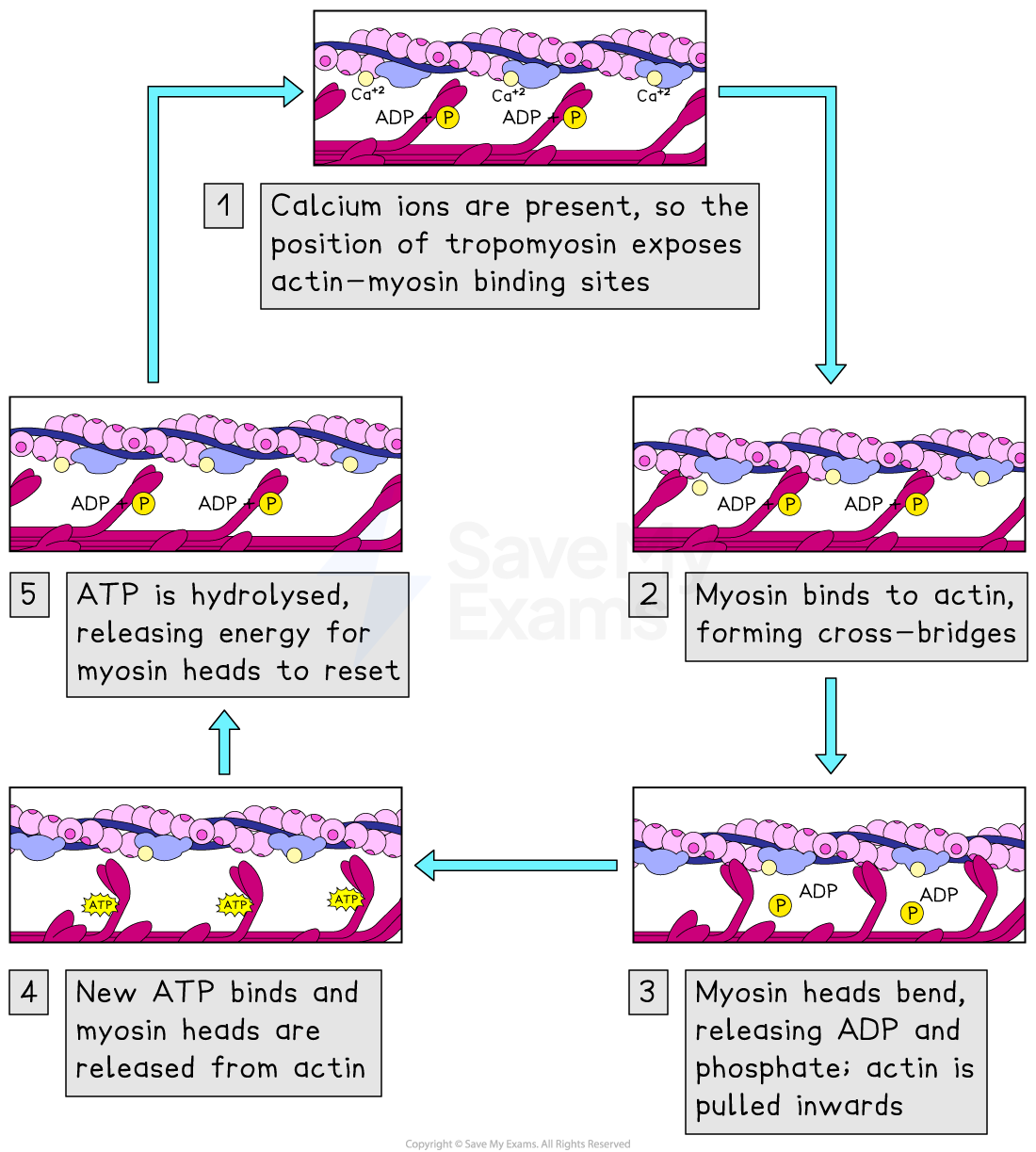Muscle Contraction (AQA A Level Biology): Revision Note
Exam code: 7402
Did this video help you?
The sliding filament theory of muscle contraction
During muscle contraction, actin and myosin filaments slide over each other, causing sarcomeres to shorten
The structure of actin and myosin proteins enables this process:
Myosin filaments are fibrous proteins with a globular head
Actin filaments have:
actin-myosin binding sites to which the myosin heads can bind
associations with another protein, tropomyosin, which blocks the binding sites when the muscle is relaxed
The process by which actin and myosin cause muscle contraction is as follows:
An action potential arrives at a neuromuscular junction, and calcium ions are released from the sarcoplasmic reticulum
Calcium ions cause tropomyosin proteins to change position on the actin filaments, exposing the actin-myosin binding sites
Myosin heads bind to actin, forming cross-bridges between the two types of filament
The myosin heads bend, releasing ADP and inorganic phosphate and pulling the actin filaments towards the centre of the sarcomere
This is known as the power stroke
Note that this bending occurs spontaneously with the release of ADP and Pi, and does not occur as the direct result of ATP hydrolysis
ATP can now bind to the myosin heads, causing them to release from actin
ATP hydrolase enzyme hydrolyses the ATP, providing energy that allows the myosin heads to reset to their original positions
The myosin heads are then able to bind to new binding sites on the actin filaments, and the process repeats

The process described above continues for as long as the muscle fibre is stimulated by nerve impulses
When a muscle is no longer stimulated:
calcium ions are taken up again by the sarcoplasmic reticulum,
the actin-myosin binding sites are blocked and myosin can no longer bind to actin
the filaments can be pulled apart by the action of an antagonistic muscle
ATP and phosphocreatine
A supply of ATP is required for muscle contraction
Energy is needed to reset the position of myosin heads for the contraction process to repeat
Calcium ions return to the sarcoplasmic reticulum after contraction via active transport
ATP for muscle contraction can come from:
aerobic respiration; this requires a sufficient oxygen supply, so it can only take place fast enough to sustain low-intensity exercise
anaerobic respiration; this can produce small amounts of ATP very quickly, but can only be sustained for short periods due to the build-up of lactate
phosphocreatine; a molecule stored by muscles that can be used for the rapid production of ATP over short periods
A phosphate ion from phosphocreatine is transferred to ADP
ADP + phosphocreatine → ATP + creatine
Examiner Tips and Tricks
It is worth learning in detail the steps involved in the sliding filament theory as you are required to know the roles (i.e. the function) of each of the following:
actin, myosin, calcium ions and ATP in myofibril contraction
calcium ions and tropomyosin in the cycle of actinomyosin bridge formation (the role of troponin is not required)
ATP and phosphocreatine in muscle contraction

Unlock more, it's free!
Did this page help you?